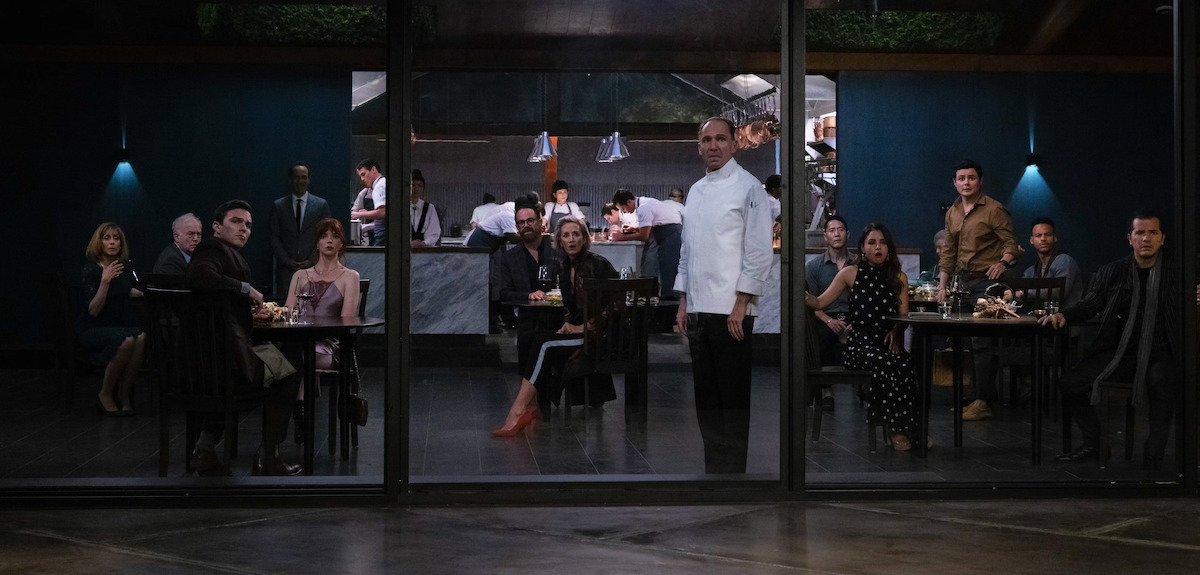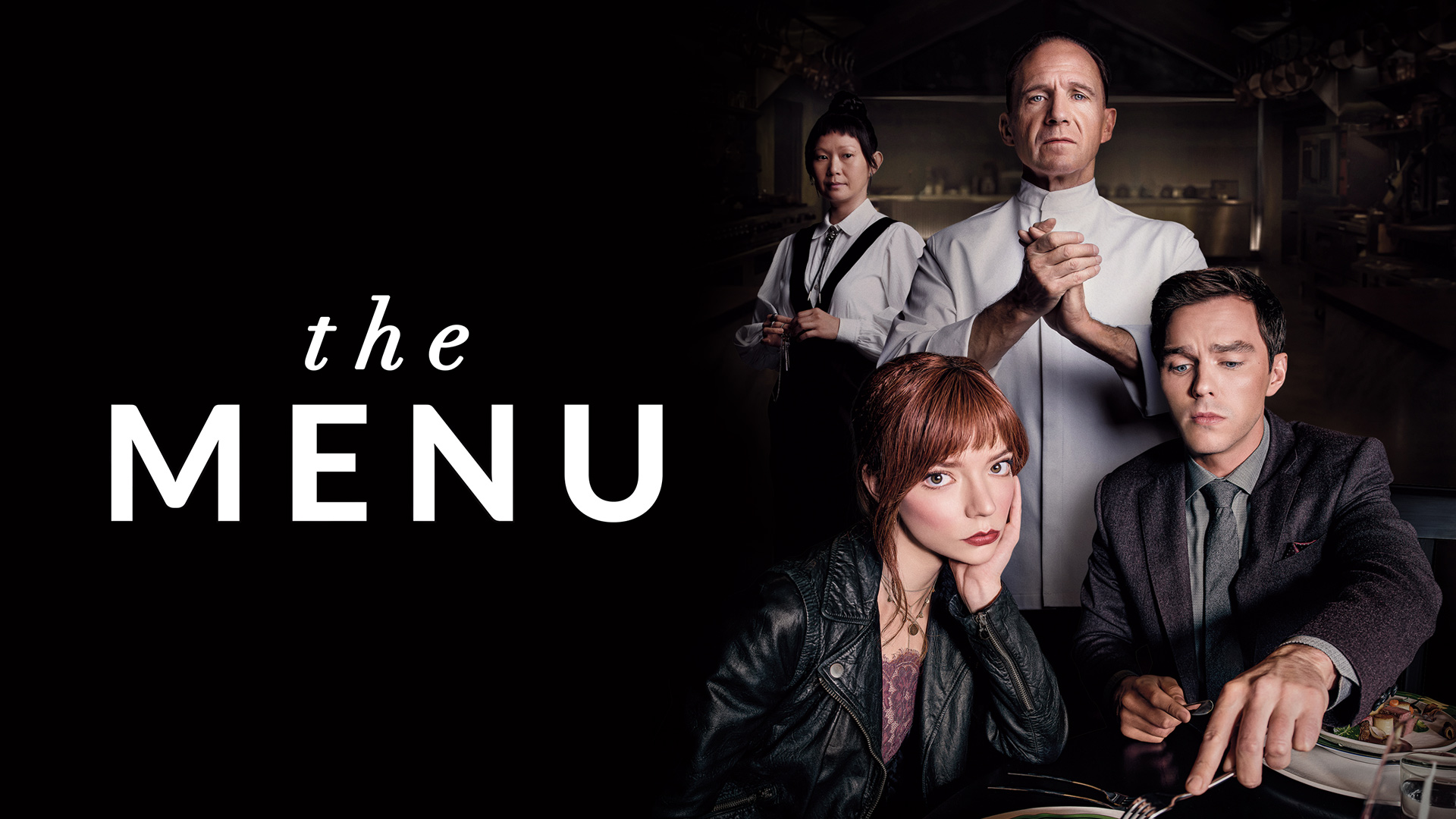The psychological thriller “The Menu” has found new life on Netflix, skyrocketing to the top of the streaming charts in early 2025. Originally released in 2022, the film was well-received by critics but saw a resurgence in popularity as audiences rediscovered its masterful mix of horror, satire, and social commentary. With its biting critique of fine dining culture, class division, and consumer obsession, the film remains eerily relevant, drawing in both first-time viewers and those returning for another taste of its layered storytelling.
A Cast That Serves Up Perfection
Leading the ensemble is Ralph Fiennes, delivering a chilling and magnetic performance as Chef Julian Slowik, the head of Hawthorne, an exclusive island restaurant that caters only to the ultra-wealthy. His precise, almost cult-like approach to cuisine sets the stage for an experience that is far more than just dinner. Anya Taylor-Joy plays Margot, an outsider who refuses to play by the elite’s rules, while Nicholas Hoult’s character, Tyler, represents the worst of obsessive foodies—worshipping haute cuisine but lacking any real appreciation for its craft.

Hong Chau (who was nominated for a BAFTA for her role) also delivers a standout performance as Elsa, the restaurant’s rigid and ominous maître d’, keeping guests in line while hinting at the dark secrets that await them. The supporting cast, which includes Janet McTeer, Judith Light, and John Leguizamo, adds depth to the film’s sharp critique of wealth, privilege, and blind elitism.
Why ‘The Menu’ Has Aged Like Fine Wine
Despite its initial box office earnings of $79 million worldwide, the film has taken on a cult status, and its themes have only grown more relevant in the last three years. The global fascination with fine dining, exclusive tasting menus, and celebrity chefs has only increased, fueled by platforms like TikTok, Instagram, and YouTube, where influencers showcase extravagant meals with exorbitant price tags.
In an era where restaurants offer $1,000+ omakase experiences and food culture is more performative than ever, “The Menu” serves as a scathing indictment of the industry’s excesses. The film cleverly explores the disconnect between those who create food as an art form and the privileged elite who consume it without understanding its value.
Its themes echo the real-world controversies surrounding Michelin-star restaurants, where chefs like René Redzepi (Noma) and Massimo Bottura (Osteria Francescana) have openly criticized the toxic pressure and unsustainable expectations in haute cuisine. The recent closures of top-tier fine dining establishments—including Noma, once considered the best restaurant in the world—highlight the industry’s growing reckoning with its own flaws, making “The Menu” feel even more prophetic.

The Twist That Keeps Viewers Talking
While the film is marketed as a psychological horror-thriller, it brilliantly subverts expectations by incorporating dark humor and satire. The final act, in particular, delivers a shocking twist that leaves audiences debating its deeper meaning long after the credits roll.
Without spoiling too much, the climax deconstructs not just fine dining but the entire culture of exclusivity and gatekeeping. The film’s use of food as a metaphor for power, control, and artistic obsession is what makes it so compelling, even on repeat viewings.
Streaming Success and Renewed Interest
Netflix has often been responsible for reviving films that didn’t initially get the widespread recognition they deserved. “The Menu” now joins a list of titles, like Denis Villeneuve’s ‘Prisoners’ and Mike Flanagan’s ‘Gerald’s Game,’ that gained second wind thanks to their availability on streaming platforms.
This resurgence speaks to the power of quality storytelling and thematic depth—proving that audiences crave more than just jump scares and predictable horror tropes. Instead, films like “The Menu” challenge viewers to think critically about power, privilege, and the intersection of art and commerce.
Final Thoughts
If you haven’t yet seen “The Menu,” now is the perfect time to experience its meticulously crafted suspense and razor-sharp wit. Whether you’re a fan of psychological thrillers, social satire, or just appreciate a film that keeps you thinking, this is one dish worth savoring—just be careful what you order.
Key Takeaways
- “The Menu” has reached #1 on Netflix’s charts in February 2025, demonstrating strong streaming appeal
- The film combines horror and dark comedy to critique modern fine dining culture
- Ralph Fiennes and Anya Taylor-Joy lead a talented cast in this tense psychological thriller
Plot and Thematic Exploration
The Menu blends dark comedy with psychological horror, centering on an exclusive dining experience that transforms into a deadly examination of class warfare and culinary obsession.
Story Development and Key Moments
Chef Julian Slowik runs Hawthorne, an ultra-exclusive restaurant on a remote island. He invites wealthy guests for a $1,250-per-person tasting menu experience.
The carefully selected diners include Tyler, a self-proclaimed foodie, and his last-minute date Margot. Other guests range from a fading movie star to a renowned food critic.
As each course arrives, Chef Slowik’s presentation grows more sinister. The meals become increasingly personal attacks on the guests’ privileges and moral failings.
Margot stands out as the only non-wealthy guest. Her authenticity and working-class background create tension with Slowik’s planned evening. A simple cheeseburger becomes a pivotal symbol of genuine culinary joy versus pretentious consumption.
Themes of Class and Consumption
The film dissects the relationship between the service industry and its wealthy clientele. Chef Slowik represents the growing resentment of workers forced to cater to the elite’s whims.
The elaborate dishes mock the guests’ superficial appreciation of fine dining. Each course exposes their ignorance of true culinary craftsmanship.
The stark contrast between Margot’s genuine hunger and Tyler’s performative food expertise highlights the divide between authentic appreciation and shallow consumption.
Satirical Elements and Social Commentary
The film skewers foodie culture through Tyler’s character, whose obsession with photographing meals and dropping culinary terminology masks his lack of real understanding.
The presence of a food critic and a washed-up celebrity actor targets the interconnected nature of fame, criticism, and fine dining. Their characters demonstrate how status influences taste and vice versa.
The kitchen staff’s military-like precision and cult-like devotion to Chef Slowik serves as a sharp critique of toxic workplace culture in high-end restaurants.
Production and Critical Response
The Menu combines masterful direction, compelling performances, and critical acclaim to create a dark comedy that resonates with audiences and critics alike. The film’s success stems from its sharp social commentary and skillful blend of horror and humor.
Cinematic Execution by Director Mark Mylod
Mark Mylod’s direction brings a theatrical quality to the film’s tight pacing and visual style. His experience from shows like “Succession” shines through in the methodical presentation of each course and scene.
The cinematography emphasizes the isolation of the restaurant setting, creating a claustrophobic atmosphere that builds tension throughout the film.
Mylod’s handling of the dramatic shifts between comedy and horror maintains a consistent tone while escalating the absurdity of the situation.
Performance Highlights and Cast Analysis
Ralph Fiennes delivers a commanding performance as Chef Julian Slowik, bringing both menace and vulnerability to the character. His precise mannerisms and controlled delivery create an unforgettable antagonist.
Anya Taylor-Joy and Nicholas Hoult’s dynamic as mismatched dinner companions provides the film’s emotional core. Their contrasting reactions to the evening’s events drive much of the narrative tension.
The supporting cast, including John Leguizamo and Judith Light, adds depth to the ensemble with memorable character moments throughout the film.
Reception by Critics and Audiences
The film maintains an 88% rating on Rotten Tomatoes, with critics praising its sharp social commentary and dark humor.
Audiences have embraced the film during its 2025 Netflix release, making it one of the platform’s top-performing titles. Many viewers report multiple viewings to catch subtle details and layered meanings.
Critics highlight the film’s successful blend of genres, from psychological thriller to social satire. The violence and dark themes serve the larger message about class disparity and food culture excess.
The movie’s success on streaming has sparked renewed discussion about its themes of privilege, artistry, and consumption in fine dining.
Frequently Asked Questions
“The Menu” combines dark comedy and culinary thrills with Ralph Fiennes leading a talented ensemble cast in this Netflix hit about an exclusive restaurant experience gone wrong. Critics praise its sharp social commentary and unique premise.
Who are the main cast members in the Netflix hit ‘The Menu’?
Ralph Fiennes stars as Chef Julian Slowik, delivering a commanding performance as the mysterious culinary mastermind.
Anya Taylor-Joy plays Margot Mills, a customer who disrupts the chef’s carefully planned evening.
Nicholas Hoult takes on the role of Tyler, a self-proclaimed foodie who brings Margot to the exclusive restaurant.
What are the critics’ reviews for ‘The Menu’ on Netflix?
The film maintains an impressive 88% “Certified Fresh” rating on Rotten Tomatoes.
Critics praise its blend of dark humor and social commentary on fine dining culture.
Audiences have responded positively, with many viewers reporting multiple viewings to catch all the subtle details.
How can viewers download ‘The Menu’ from Netflix for offline viewing?
Netflix subscribers can download the film through the Netflix mobile app on iOS or Android devices.
The download option appears as an icon next to the movie title when viewing on a compatible device.
What is the premise of ‘The Menu’ on Netflix?
A select group of diners visits an exclusive restaurant on a remote island for a once-in-a-lifetime culinary experience.
The evening takes an unexpected turn as Chef Slowik reveals his true intentions through each carefully crafted course.
The story explores themes of class distinction, artistic obsession, and the culture of high-end dining.
Are there similar shows about restaurant life available on Netflix?
“Chef’s Table” offers a documentary-style look into the world of prestigious restaurants and celebrated chefs.
“Burnt” starring Bradley Cooper explores similar themes of culinary perfectionism and kitchen pressure.
“Boiling Point” provides an intense look at a high-stakes restaurant environment.
What are the top food-related series currently streaming on Netflix?
“Salt Fat Acid Heat” presents an educational journey through culinary fundamentals and global cooking traditions.
“Chef Show” features Jon Favreau and Roy Choi exploring various cooking styles and techniques.
“Somebody Feed Phil” takes viewers on international food adventures with humor and heart.







